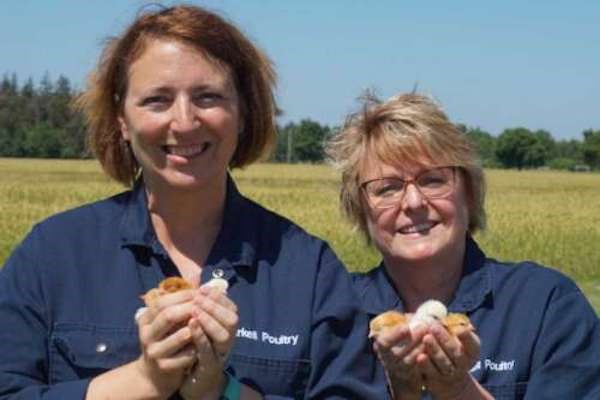The following story was provided by University of Guelph news services
Raising slower-growing broiler chickens means less efficiency for producers and potentially higher costs for consumers, but it would improve the welfare of millions of birds, according to the largest and most comprehensive study of broiler chicken welfare worldwide by University of Guelph researchers.
The team hopes the study will help poultry breeders and producers to select traits associated with better welfare.
This is a potentially costly move but one that may end up benefitting the industry by lending support for higher animal welfare standards and improved meat quality favoured by consumers, said animal biosciences professor Tina Widowski.
“We found that, overall, many indicators of welfare are directly related to rate of growth,” said Widowski, who led a team of experts in poultry welfare, nutrition, physiology and meat science at U of G.
Developed mostly through selective breeding, fast-growing birds reach market weight of about two kilograms in about 35 days and satisfy consumers’ desire for large, uniform chicken breasts. By changing their body shape, this breeding has yielded large breast muscles but also short legs that make it difficult for chickens to perform normal activities.
Animal welfare concerns have led to development of slower-growing breeds that take at least a week longer to reach market weight. Raising chickens more slowly adds expense for producers, especially in extra feed costs.
The researchers studied more than 7,500 chickens raised at U of G’s Arkell Research Station.
They looked at 16 genetic strains bred for four growth rates as well as other traits. Outfitting the birds with wearable devices like Fitbits, they compared mobility and activity. An obstacle test allowed the team to compare leg strength among different poultry strains. They monitored birds’ use of enrichment items and examined birds for foot lesions, and also looked at meat quality.
As expected, faster-growing chickens were less active and mobile and had poorer foot health – all markers of poorer welfare. The fastest-growing birds also had breast muscle damage, which typically results in economic losses because of poor meat quality.
“It was the combination of high breast yield and fast rate of growth that led to poorer welfare outcomes,” said Stephanie Torrey, an adjunct faculty member with the Department of Animal Biosciences.
The researchers said they were encouraged to find that some major health and welfare issues – including skeletal leg muscle problems and heart failure — that were common about 20 years ago no longer prevail.
“That means breeder selection to resolve those problems has worked, and we hope that results of our study will set the direction for the next phase of genetic changes leading to welfare improvements,” said Widowski, who holds the Egg Farmers of Canada Chair in Poultry Welfare.
Referring to a new report written by the researchers and provided in July to the Global Animal Partnership (GAP) based in Texas, Torrey said the findings may help retailers attract customers looking for products raised under higher welfare standards.
“This will perhaps arm some companies to differentiate their product based on welfare outcomes,” Torrey said. “Whether or not average consumers will be willing to pay a premium for improved welfare outcomes remains to be seen — and we don’t know how the economic benefits of reduced meat quality defects may offset the increased costs of production.”
As consumer demand grows for chicken meat, producers raise billions of broilers worldwide, including more than 700 million birds produced each year in Canada.
Broiler chicken health and welfare is a focus of GAP, one of the largest animal welfare food labelling programs in North America. Dozens of multinational restaurants, grocers and food service companies have already pledged to source only broilers raised under GAP standards.
Looking for data to back up its welfare standards and to determine optimum breeds and management methods, GAP provided a research grant to U of G in 2018 to study broiler welfare. The first of-its-kind study was funded by $1 million from GAP, the University’s Food from Thought project and the Ontario Ministry of Agriculture, Food and Rural Affairs.
The researchers are now preparing a series of peer-reviewed articles for publication within the next year.
